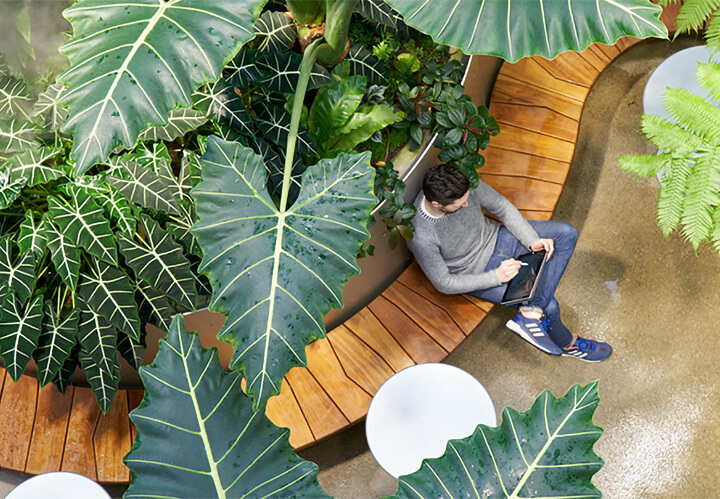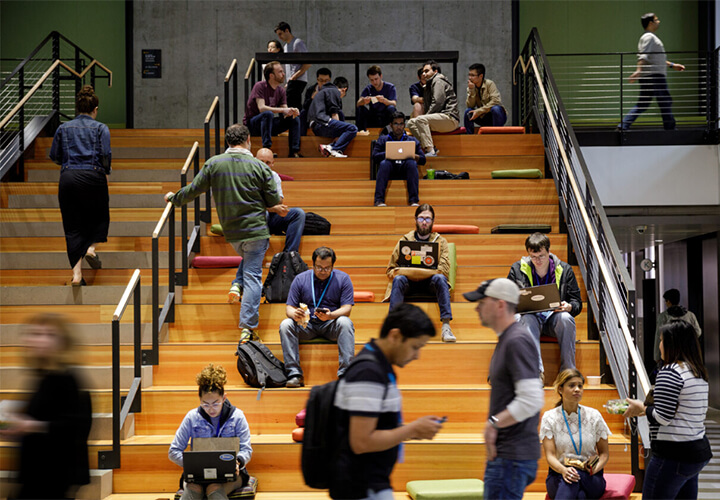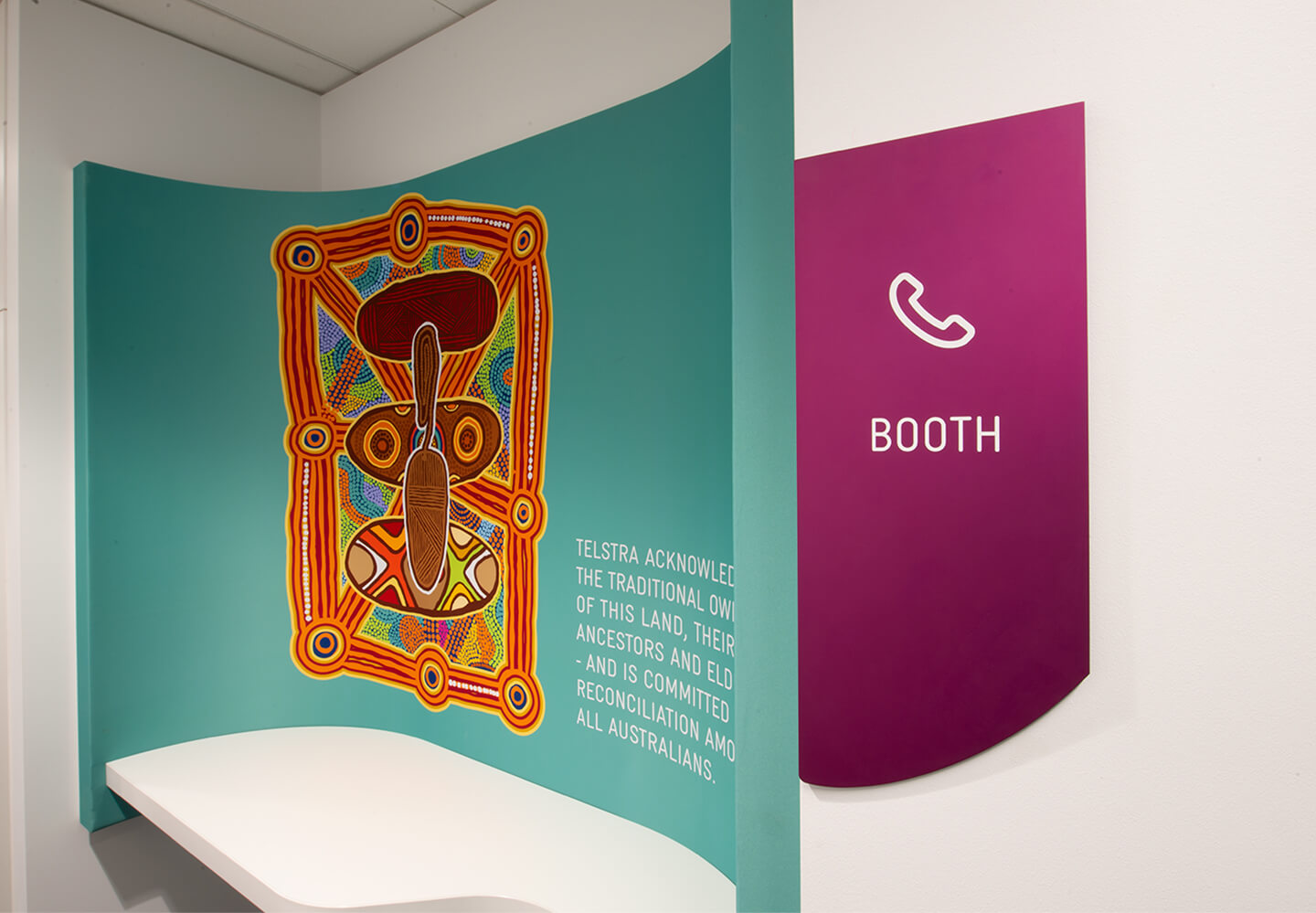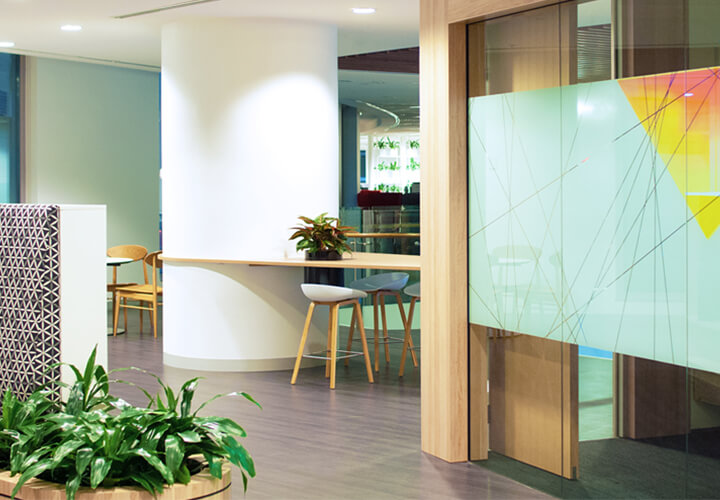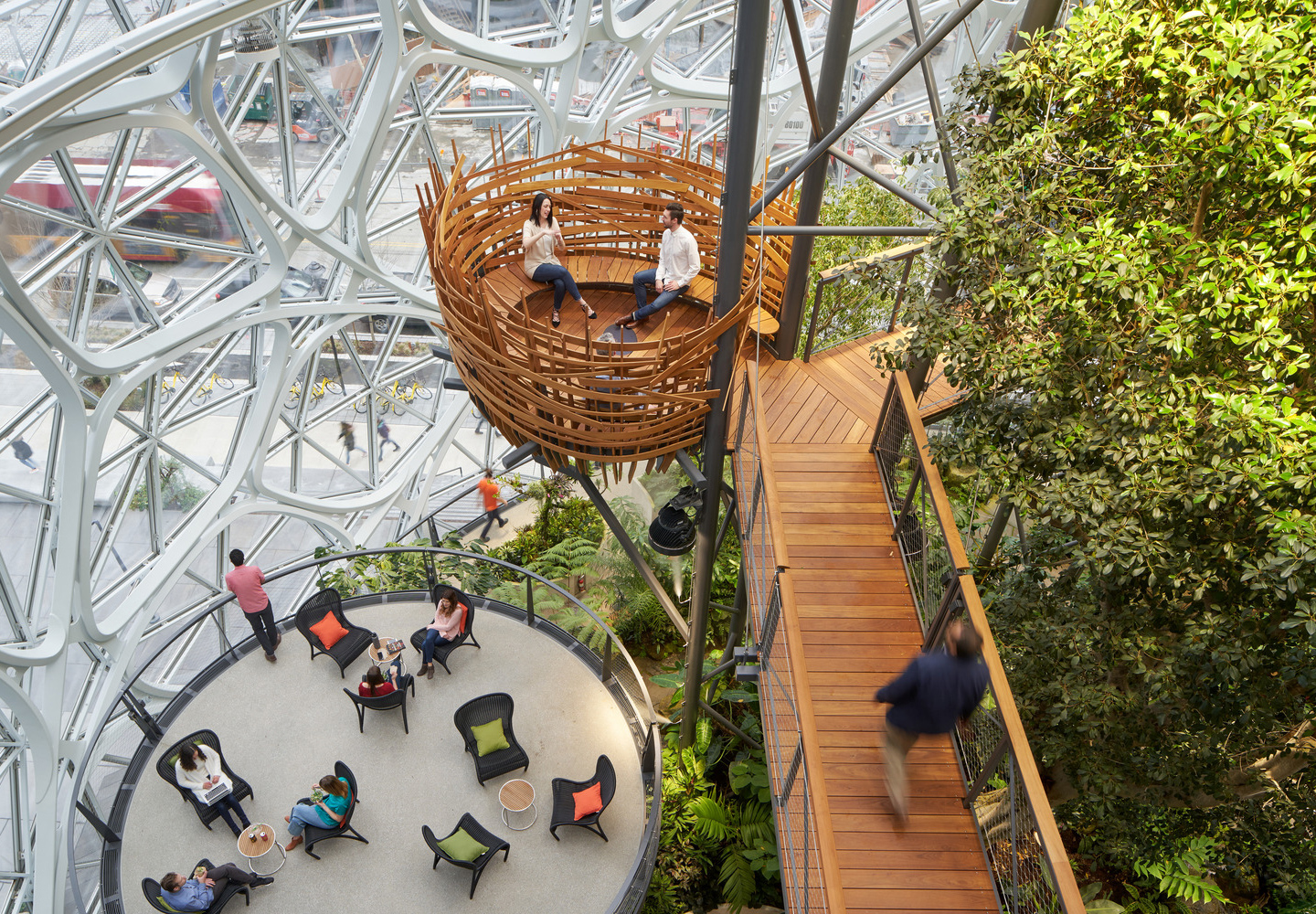Covid-19 has fundamentally changed the way we work – so how will you entice people back to your office as restrictions ease?
We’ve written before about Gullart Architects Pandemic-Proof city, designed to protect residents from future pandemics by providing solutions to the crises facing cities and communities. As the architects write, “We cannot continue designing cities and buildings as if nothing had happened”.
As we prepare to head back to the office in our post-covid world, there is a unique opportunity to re-examine the purpose and design of workplaces. So, what are the new priorities for the post-covid office?
Green Spaces and Fresh Air
Sustainability and green designs have been key factors in designing buildings and workplaces for some time, which is sure to continue. Green spaces, such as roof gardens, terraces and indoor planting, will continue to feature heavily to improve air quality and ventilation around buildings. “Think of green buildings as giant N95 facemasks, protecting you from harmful toxins the moment you step inside,” said Dr Ho Nyok Yong, the president of the Singapore Green Building Council (SGBC), when addressing this topic.
As workers become even more concerned with fresh air and exposure to germs, greenery and ventilation in the workplace will become more important for physical and mental health benefits.
Amazon has placed this idea at the centre of its Seattle headquarters with The Spheres, “a multi-story, glass-enclosed workplace containing tens of thousands of plants and trees from around the world.” “As exposure to nature is proven to put people at ease and help them think more creatively, The Spheres are designed to help Amazon employees feel and work their best.”
Collaborative and Sensory Experiences
As wellbeing continues to be a central focus for businesses in our post-covid world, office designs that help promote positive mental health will be increasingly popular. With workers seeking more sensory and collaborative experiences, the open-plan office will give way to environments that enable different working styles, from quiet spaces for solitary work to lounge areas for meetings.
Companies are eliminating desks and assigned seating structures favouring breakout areas, libraries, and cafés to provide workers more opportunities for collaboration while also creating library-style quiet zones for individual work.
Tech company Salesforce has halved the number of desks in their offices to create booths, couches, cafes and communal spaces. Similarly, Atlassian has opted against desks and embraced synchronous workspaces, while Cloudflare has redesigned its San Francisco and London offices to introduce purpose-designed seating zones that grow and shrink to accommodate meetings, workshops and projects.
Wayfinding and Zoning
Wayfinding within offices and buildings will become even more prevalent to assist social distancing and reduce density in communal areas, such as corridors, lifts and stairwells. We have become accustomed to floor decals, stickers, wayfinding signage and colour coding to help us maintain the correct distances and behaviours, and this will continue as we adjust to post-covid life.
As offices become evolving spaces for work, there is also a need to delineate dedicated zones for activities. BrandCulture worked with Telstra to create phone booths within its Sydney headquarters. The booths, which feature bright colours and the iconic telephone handset symbol, provide workers with a designated area to make phone calls without disrupting others.
If the pandemic has taught us anything, it is the need for creative thinking and flexibility in the face of change. The workplace of the future is a constantly evolving space that provides designers with plenty of room for great ideas and creativity.
Pictured above: Amazon The Spheres in Seattle by NBBJ. Below, clockwise from top left: Amazon ‘The Spheres’ by NBBJ; A communal workspace within Amazon headquarters in Seattle; Telstra headquarters in Sydney by Brand Culture.
